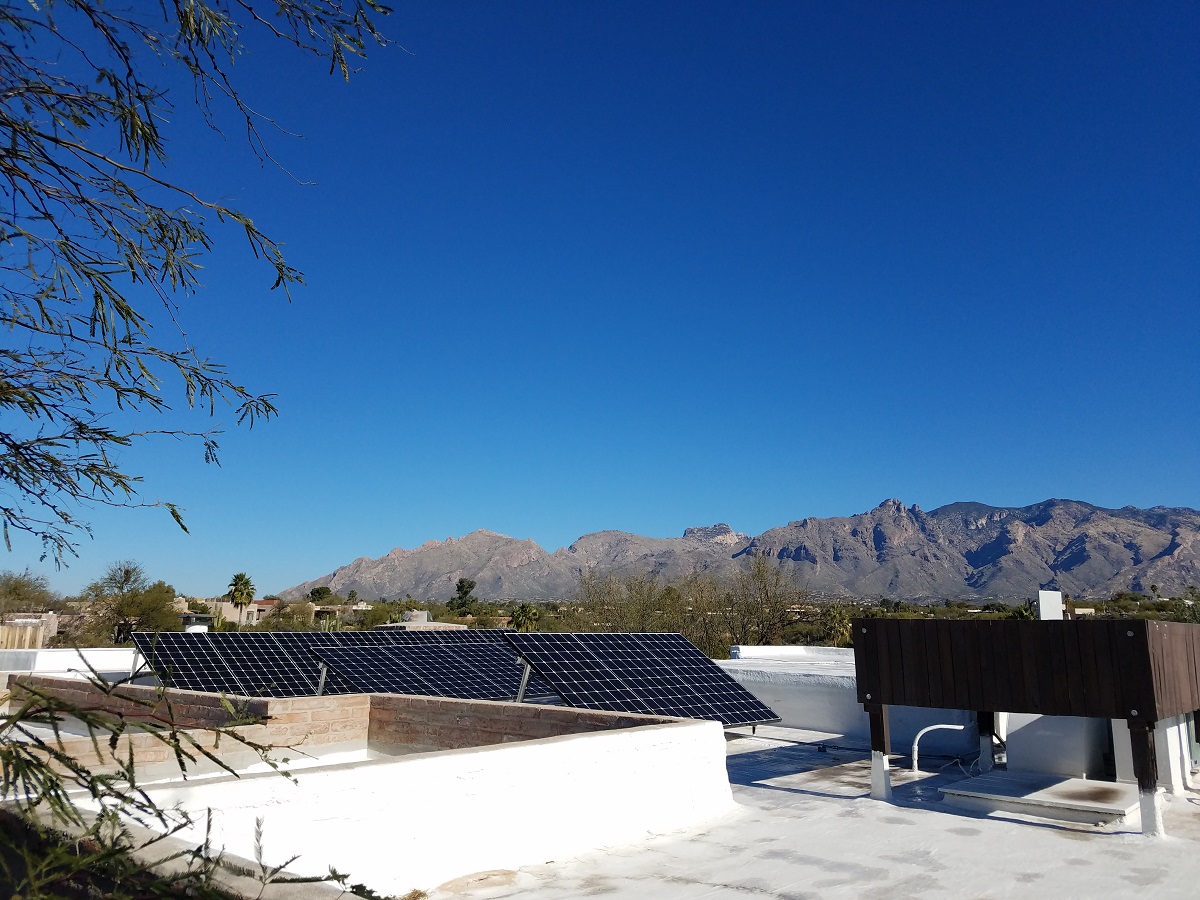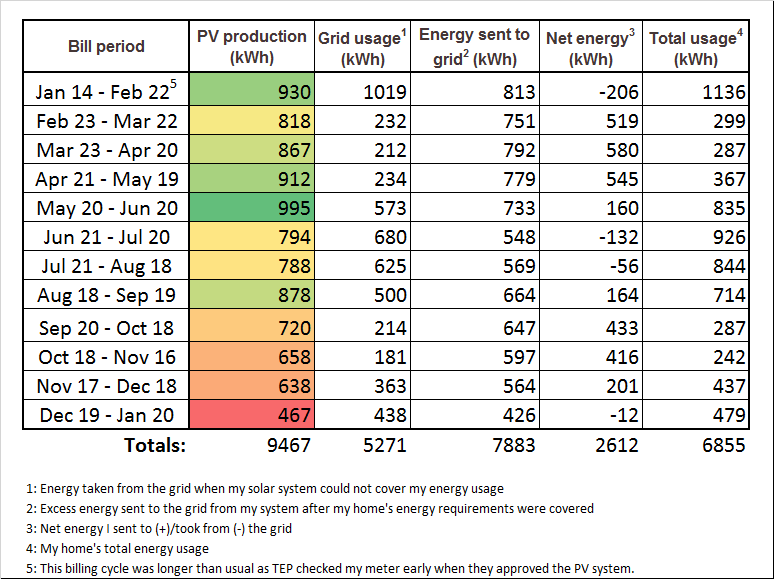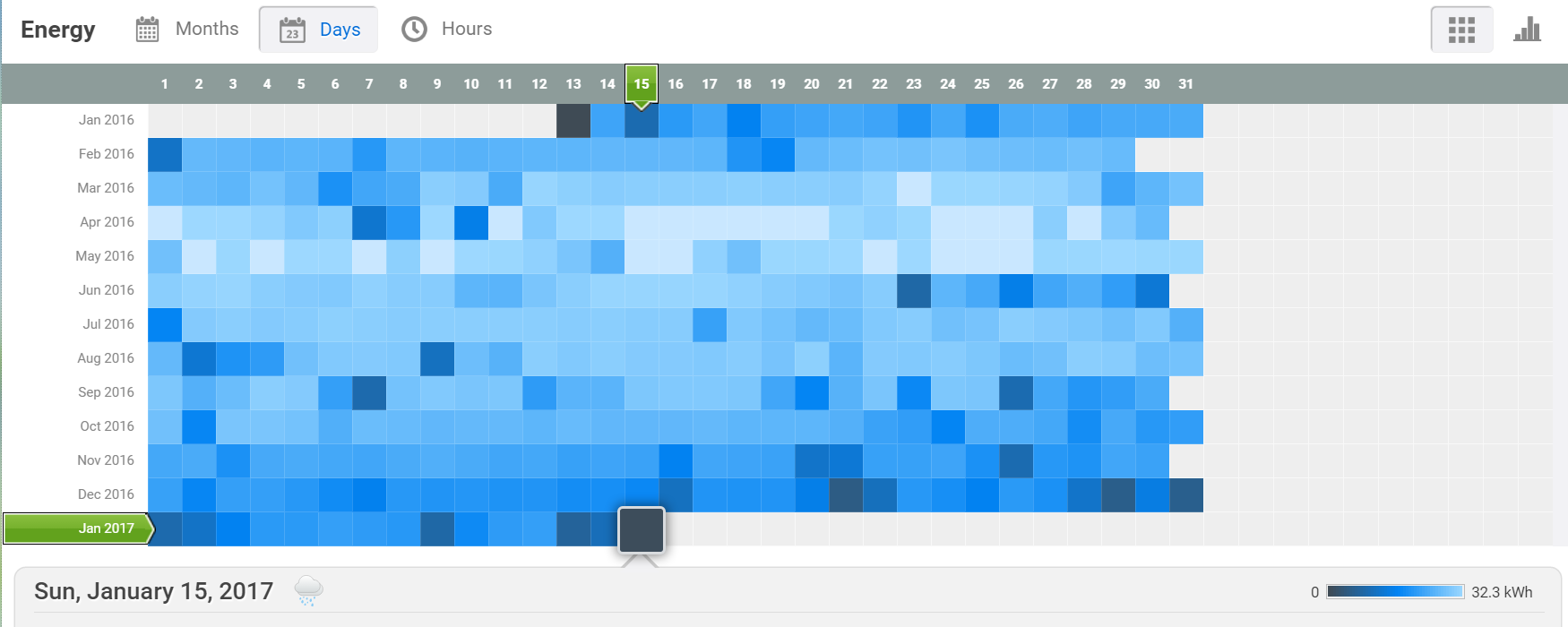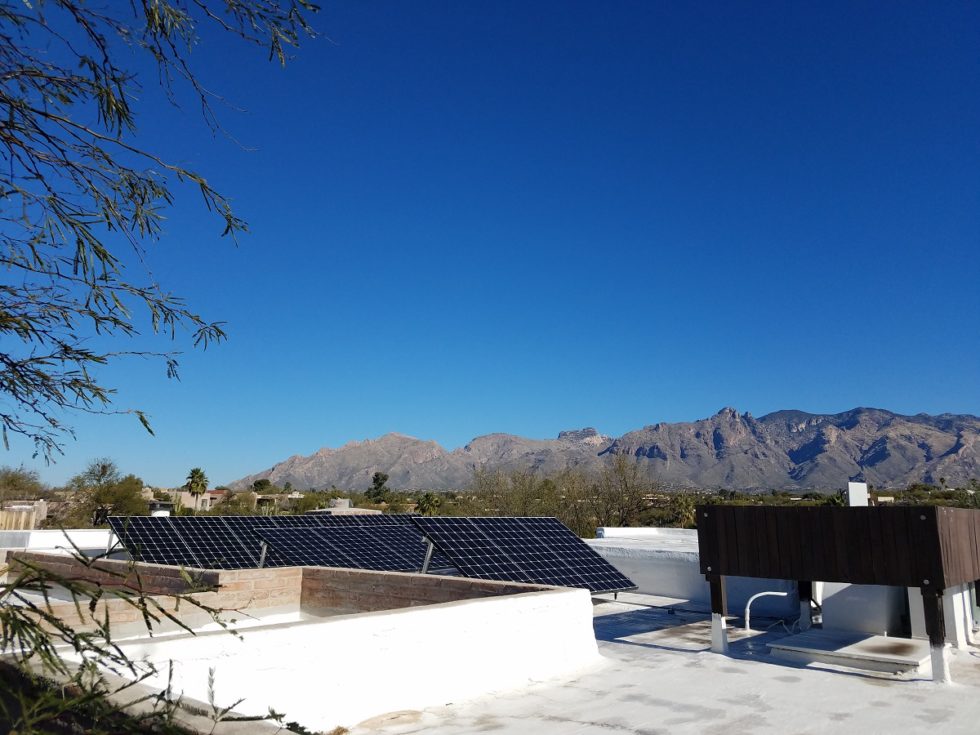A couple weeks ago, I celebrated the 1-year anniversary of my solar PV system getting connected to the grid. While it was installed in December 2015, TEP (my utility) only completed its check and approved the system on January 14, 2016. To celebrate this momentous occasion, I’m going to share my data with you! In this post, I’ll tell you about my PV system, provide the performance and financial numbers, and give you my thoughts after 1 year of solar.
Hopefully this will be interesting/useful to those of you considering going solar yourselves. Note: reimbursement in Arizona will change soon (and not in favor of residential solar), so if you’re in AZ and have been thinking about going solar for a while but for whatever reason haven’t gotten around to it, DO IT NOW. I follow the policy side of things pretty closely, so trust me on this one.
System Summary
I made my purchase in December 2015, just in time to get the tax credit on my 2015 taxes instead of having to wait a full year. After getting proposals from three companies (2 local, 1 national), I decided to go with one of the local companies, Net Zero Solar. Net Zero’s proposal was the least expensive, and it was also clear they really know their stuff and are in the solar business because they think it’s an important thing to do. They’re also down-to-earth and upfront about benefits, downsides, the local utility’s compensation, etc. And I know a bit about solar so I definitely tested them to double check!
Here are the technical details for my system:
- 5.13 kW array
- Comprised of 18 285 kW LG PV panels
- Includes 18 Enphase microinverters
- Unirac SolarMount mounting system
- Array azimuth of 160° from true north
- Panels angled at 20° and 30° from the horizontal (some rows are higher than the others) on my flat roof
- Estimated annual PV generation: 9,571 kWh
Installed system cost: $16,290.
Tax credits: $1,000 Arizona tax credit and $4,887 federal tax credit
Net system price: $10,403

My solar PV system! Well, most of it. And yes, I climbed a tree to take this picture .
My electric bills before and after going solar
I bought my house in July 2015. My electric bills for August 2015 through January 2016 were: $107, $122, $64, $60, $228; $117. My house is fully electric (no gas), so my expensive months are in the summer when I’m cooling the house and the winter when I’m heating the house (I have a heat pump that both heats and cools the house; no air conditioning!). Autumn and spring are great; I barely have to use my heat pump at all. On top of that, I applied a lot of energy efficiency measures in September and October 2015, and those energy savings were reflected in my bills.
My system was turned on in January 2016. Since January and February are two of the least sunny months here in the Northern Hemisphere, it took a couple of months for my electricity generation to outpace my usage. Once this stabilized, though, my electric bill has been less than $16 every month.

My electric bills before and after going solar.
The $15 consists of a $10 customer charge that every TEP customer pays monthly, green energy charges totaling between $3 and $4.50, and taxes and assessments that sum to less than $1. Those green energy charges are not because I have green energy; they’re charges that every TEP customer pays to help the utility procure more green energy.
In October, I actually received a $55.78 credit on my bill for 2255 excess kWh I had produced in the previous 12 months. When this credit is considered, I paid a total of $138.28 for electricity in the last 12 months! Not bad, not bad at all.
The nitty gritty: month-by-month energy generation and usage
I’ve included my monthly energy production and usage details in the table below:

My energy production and usage details for the last year.
Since I’ve based this on my billing cycles, some months are longer than others. In particular, the first month is quite a bit longer because of TEP’s timing with getting my system going and checking my meter. Still, you can get a sense of how well the system performed monthly. In the “PV production” column, green indicates more production while red indicates less.
In total, my PV system produced 9,467 kWh of energy in just over 12 months (FYI, the total for the first 365 days was 9,385 kWh). In their proposal, Net Zero Solar estimated my annual production would be 9,571 kWh. Pretty close!
My best months were April and May, when it’s hot and sunny in Tucson but Monsoon season hasn’t started yet. Conversely, my worst months were December and January, when daylight hours are lowest here (plus this winter has been fairly rainy).
Enphase provides a really cool monitoring service for people whose PV systems use Enphase microinverters. It lets you see your system’s production year-to-year, month-to-month, day-to-day, and even hour-to-hour. Here’s a screenshot that shows my daily production for the last 12 months:

Screenshot of my Enphase Enlighten solar production data for the first year.
Isn’t that neat?!
A note on PV system size and electric vehicles
If you look at my beautiful table closely, you’ll see that my total energy usage in the last 12 months was 6,855 kWh, and that I produced 9,467 kWh in solar. Since I’m on a simple net-metering plan, where each kWh I produce offsets a kWh I draw from the grid, you may be thinking that my system is oversized. And you’d be correct.
In fact, my usage was only 72% of my production. Based on this, I could have gotten a system with just 13 (rather than 18) 285W panels. This would have cost roughly $11,729 before tax credits, or $7,210.16 after tax credits. I could have saved $3,000!!!
However, I actually purposely went with an oversized system. I did this for 3 reasons:
- I currently live alone. If I get a roommate, the total energy usage will increase.
- PV systems have a natural performance degradation, especially in the first couple of years.
- Electric vehicles! My next car will be a plug-in. I don’t know when I’ll get one, but I wanted to plan the solar system accordingly.
Let’s think about reason #3 for a minute. Right now my car gets roughly 30 miles per gallon. Assuming I drive 10,000 miles a year, gas costs me $667 per year at $2/gallon, $1,000/yr at $3/gallon, or $1,333 at $4/gallon. Who knows what gas will be over then next decade or so, but that gives you some idea of what I pay for gas.
A general rule of thumb is that an EV will get 3 miles per kWh. Let’s assume 10,000 miles per year and that I’m able to charge exclusively at home. That would mean that in a year, my EV charging would require 3,330 kWh. Last year I had 2,612 kWh in excess energy from my PV system. So, even if I drive fewer miles or charge elsewhere on occasion, it seems like my PV system is in fact correctly sized for what I want to do. And if you crunch the numbers you’ll find that the money side of things makes more sense now too. Now I’ve just got to go get that EV!
Of course, I’m an energy purist. Even if the money doesn’t work out, money is not my only reason (or main reason) for getting solar or wanting an EV. Rather, I believe very strongly that reducing fossil fuel consumption is vital for humanity’s future prosperity, and that anyone who can afford to should lead by example and do all they can to reduce their use. Whether this is through efficiency, going solar, getting an EV, or whatever else you can think of, I think it’s important to do what you can.
(Stepping off my soapbox now.)
If you’ve gotten to this point, thanks for reading! Hopefully this post provided you with new knowledge or insight that will be useful going forward. And, if you know anyone else who might find this useful, please consider sharing!
Share this Post
